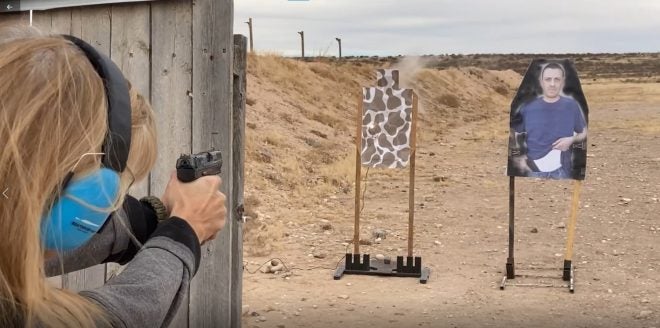Former Sparks, Nevada Chief of Police Steve Keefer has taken to heart his role in police survival, even in retirement. He understands the value of training, in particular “reality-based training,” which for many agencies refers to role play with inert munitions. Its effectiveness is lauded in the law enforcement and military realms for facilitating better control over the physiological effects of stress, as well as improved decision-making about use of force.
Keefer’s interest in reality-based training focuses on shortening the reactionary gap in order to win a gunfight in which the chips are down. In case it’s been a minute since you had driver’s ed or defensive driving, reactionary gap refers to the time consumed between becoming aware of an external stimulus (like a red light, or a violent criminal actor), and selecting, then performing the appropriate response. Some defensive training experts refer to this as the OODA Loop, which stands for observe-orient-decide-act. If you want to see a memorable and rather cute example of the reactionary gap concept, check out this video with integrated combatives master Tom Kier.
The invention, called Reactionary Gap, Keefer designed to address one of the most critical moments an officer or armed civilian can face: incoming fire. Keefer reached out via LinkedIn to get my take on the product, not necessarily to have a review done. But a consumer review is probably the best way to record the experience and assessment of the “RG” system, so here we are.
First, the nuts and bolts. The system is packaged in a sturdy Pelican-style case, about 12×18 inches. Inside, thick, custom-cut foam padding encases nine primary components.
The most notable aspect of the system is a flashing LED light, encased in a tube of pipe insulation-like material that’s about three inches long. The front of this spongy tube has the light in the center and a peel-off cover that exposes adhesive, which attaches to the rear of a target. For preparing cardboard or similar backing targets, a hunk of steel resembling a rifle barrel and cut to a sharp edge on one end is included. Target prep entails hammering the dull end of this steel tube into the backing, which should be supported by scrap wood for the process. It sounds more complicated than it is. With about 12 whacks of a hammer, my target sported a clean hole that matched perfectly the muzzle of the revolver printed on the front of it. Want to work with steel instead? Just stick the LED’s housing to the back such that the light still can show on the edge of the impact side.
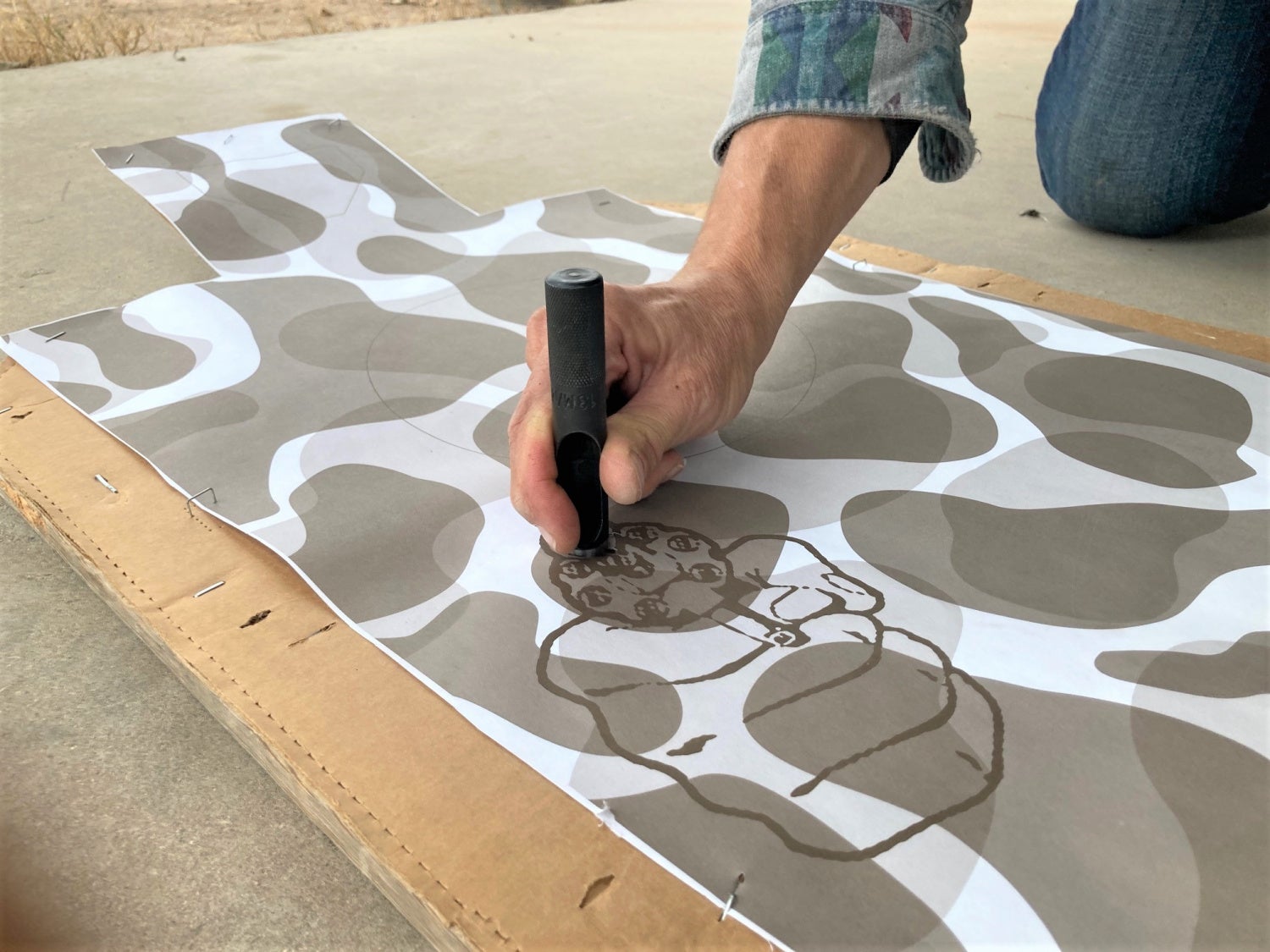
Target prep
On the back of the LED/insulation device is a socket into which a male-end cable (included) is plugged. The cable is about six feet long, allowing for the receiver that goes on the other terminus to be attached and placed well away from the target. It’s powered by a CR123A lithium battery (also included), and has a simple on/off switch and tiny “on” green indicator light that doesn’t distract from the red/orange flash of the target’s LED.
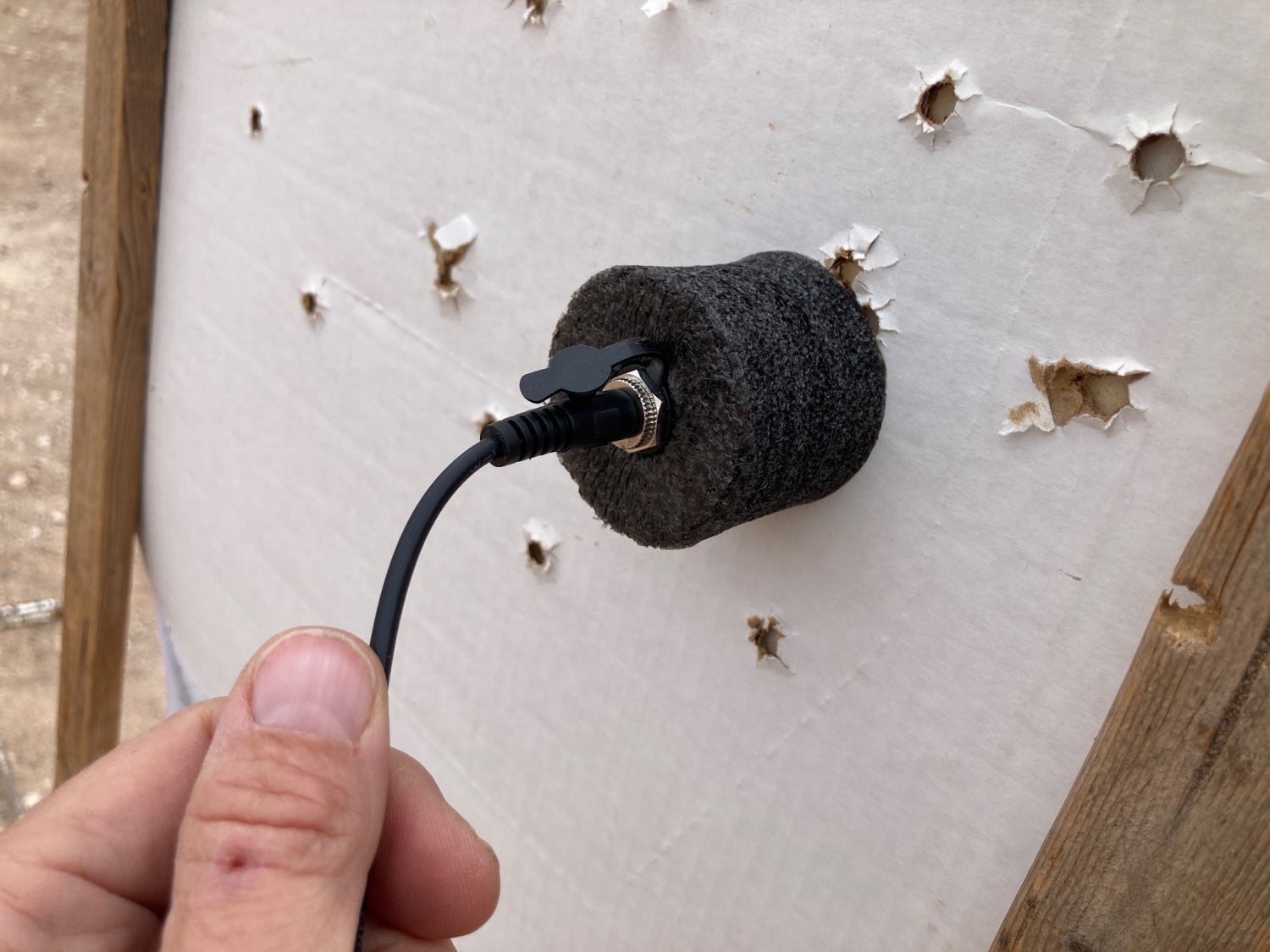
RG flasher installed on target backer
A set of turquoise-colored RG logo earmuffs is included. They fit tightly but are comfortable, allowing for the user to wear earbuds that are part of the kit.
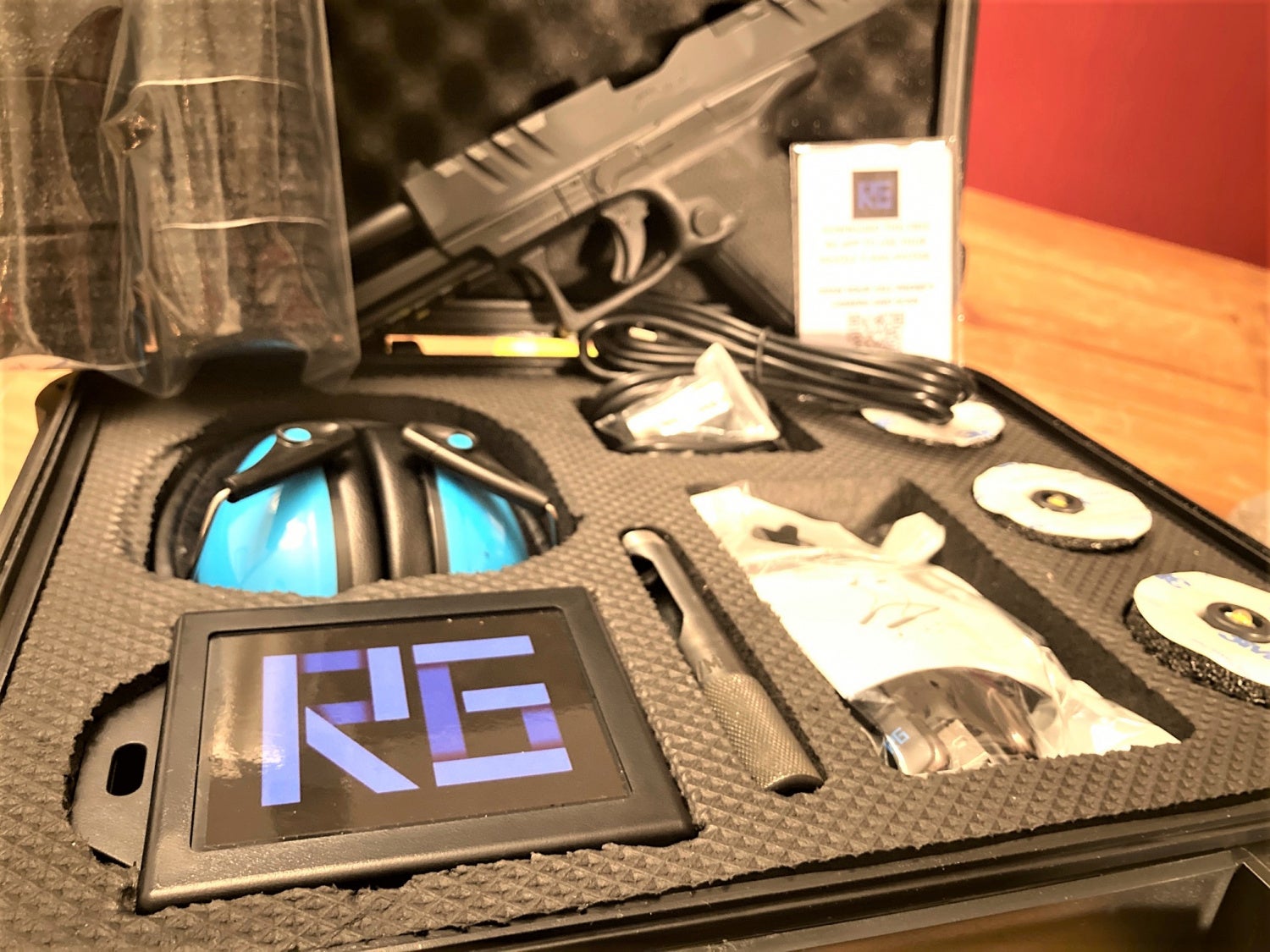
RG Kit. Walther PDP not included.
Finally, there’s the RG app. I ran it on an iPhone and it worked well; can’t comment on its performance with Android. The app allows the system operator to choose the type of fire the trainee faces. There are single and double-tap shots that can be run per tap or at random. When the “threat” fires at the trainee, the RG delivers both simulated muzzle flash and audible gunfire. The latter can only be heard by the person wearing the earbuds, and the system will only accommodate one trainee at a time—this is an inherent weakness for anyone training with a partner or team.
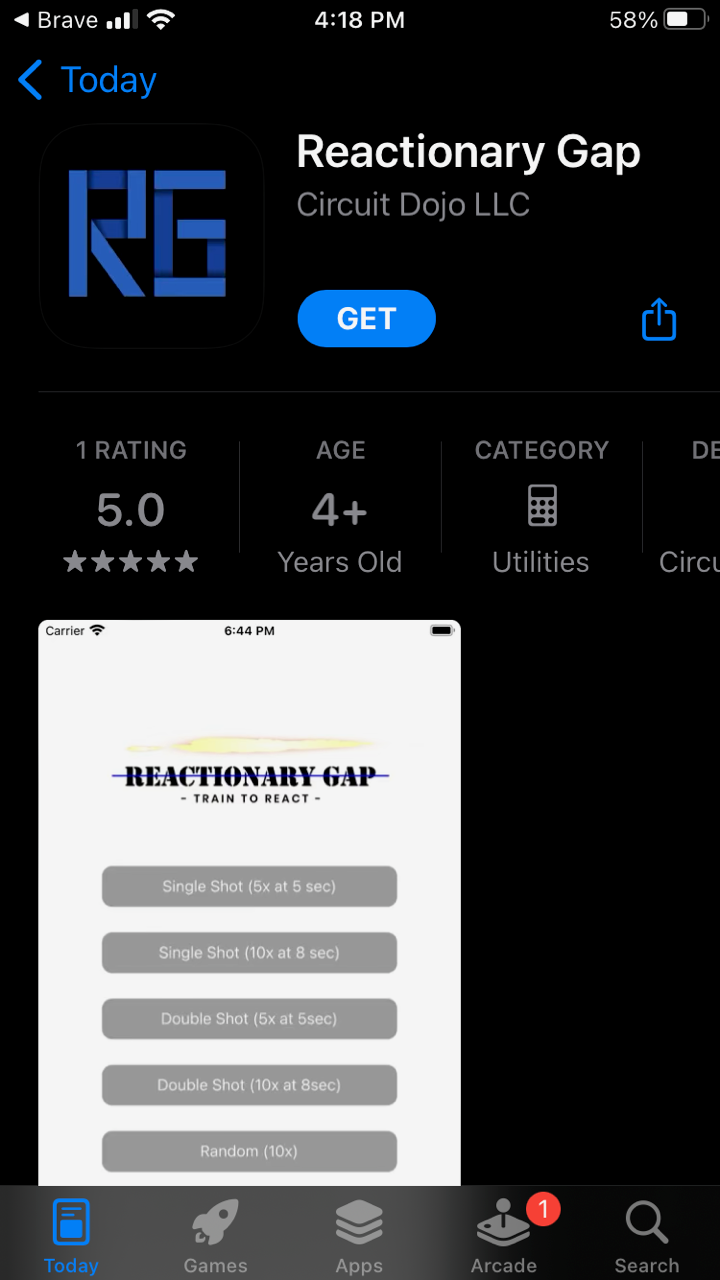
In the app store
I’m not the most skilled nor patient person with electronic goodies on the range. The Reactionary Gap system didn’t demand much patience, though. Thanks to the excellent, pictorial, even somewhat weather-resistant user manual, I was able to prep and test the system in my dining room before going live—in fact, the system works just fine as a dry fire simulator, save for the fact that triggers don’t reset themselves without live ammo.
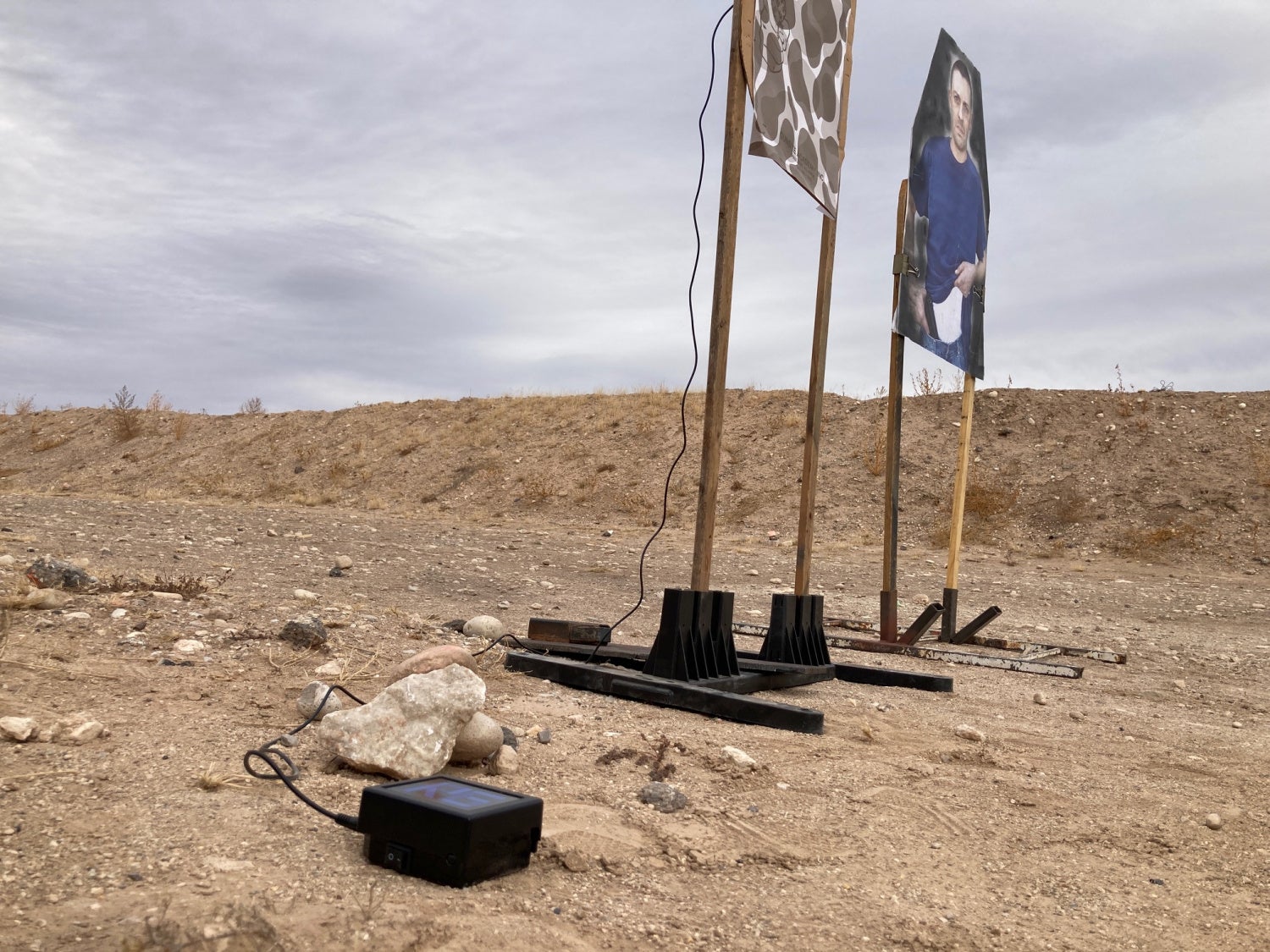
Receiver attached to the target. Thanks to Hatpoint for a great target stand.
When I first tested the device on a hot range, I was somewhat surprised at my tendency to shoot tit for tat (RG goes flash-flash, I shoot bang-bang in response). That came largely from knowing what app setting I’d chosen. Stopping fire when the attacking behavior, not just the gun, stops is the appropriate response. This problem went away to an extent when a partner ran the app without telling me the setting. This made me conclude that, as with most reality-based training exercises, the RG is best experienced by users who aren’t familiar with the system.
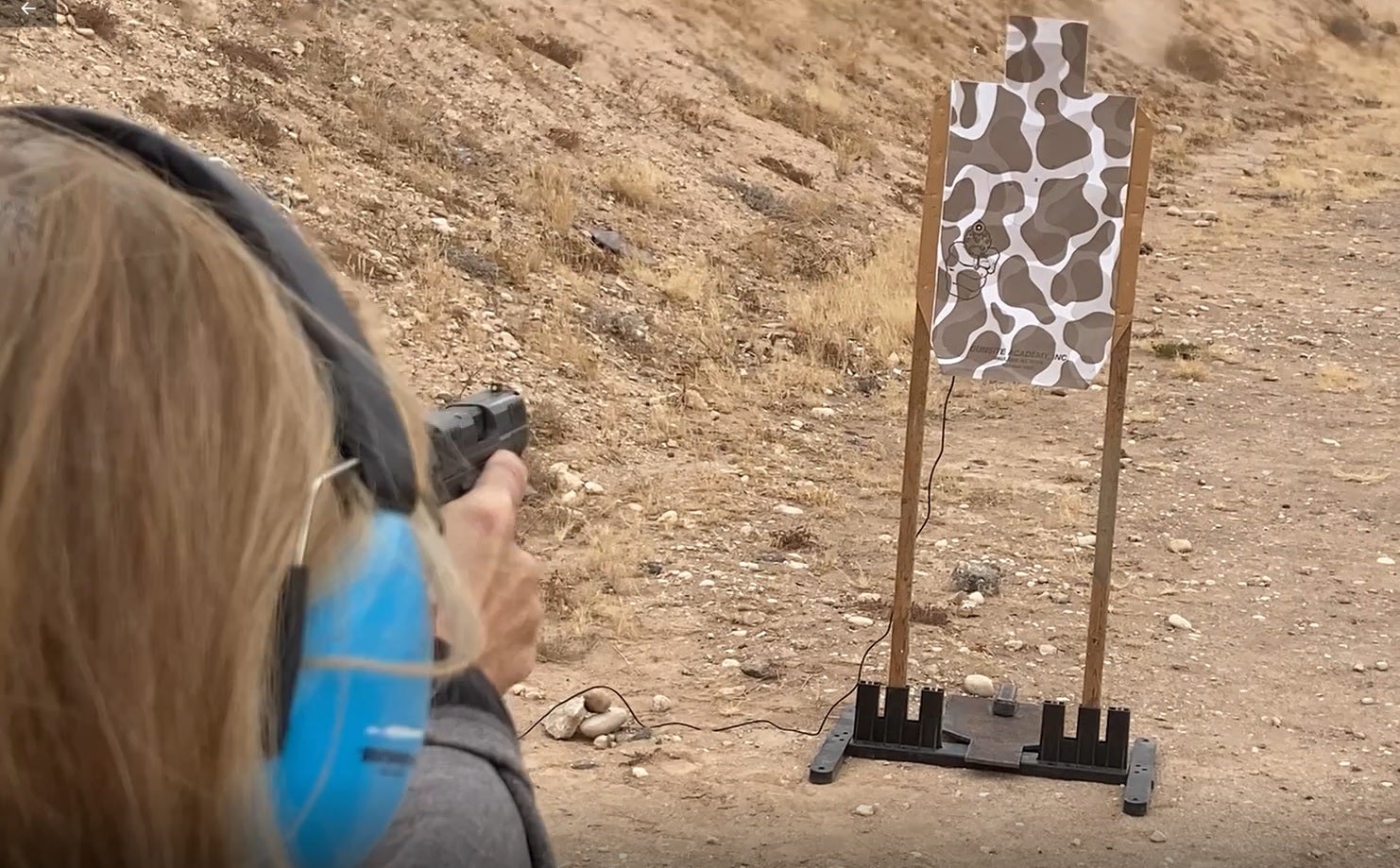
Waiting until incoming fire happens to intiate a response is not the habit we wish to form. However, there are instances when return fire is the correct answer.
To my surprise, the RG was highly visible on a hazy but full-daylight winter afternoon. I mistakenly thought it would only be effective for dim light training. That LED is bright! Especially in darkness, though, comes the risk of the trainee shooting the device out. Fortunately, the package includes a backup cable and several replacement LED units for just this reason. Further replacements are available for order.
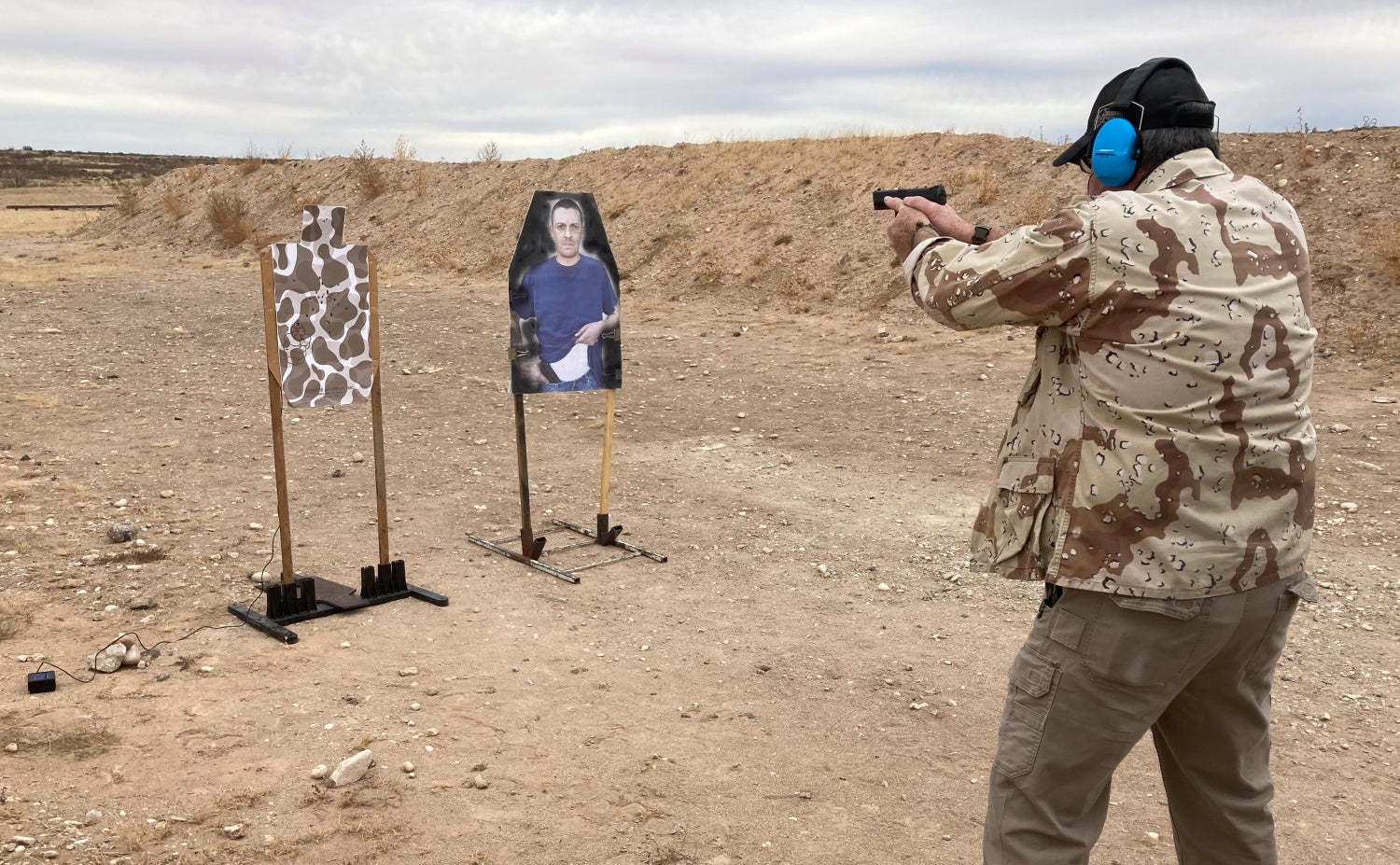
Receiver is visible on the ground to the left of the Hatpoint Target Stand.
My partner is a long-time law enforcement and civilian use of force instructor. Each of us has run hundreds of people, including uniformed officers and civilians, through force decision scenarios. Many of those exercises are designed to avoid escalation to shooting. Some are at florid, incendiary status from the outset. Does the RG have a place in such training? Our shared answer is a guarded yes. It can be useful in active shooter or other scenarios where the participant has low knowledge of the situation. Especially where effort is taken to set up multiple “actors,” be they paper or steel targets, some of which are non-threats and one of which is the RG (and possibly other contrived threats), it provides a good opportunity to exercise threat recognition and reduce the possibility of the armed person making decisions under duress that endanger others. It also can have applications for law enforcement room-clearing based exercises. Careful design is critical though, in order to avoid the sense of waiting to be shot at before taking action. In a poorly-designed exercise or with improperly presented instruction, the RG could potentially do the opposite of its intended purpose. It’s my opinion that this device is one of the few I’d say is best employed by experienced instructors and not the everyday gun owner, who might misinterpret some aspects of its use. There is definitely value in instilling the response of fighting back in the event of incoming fire, after escape has been eliminated as an option. This is one other potential benefit of the Reactionary Gap system for civilian training, albeit that it falls short of causing physical pain to fight through as simulated munitions can.
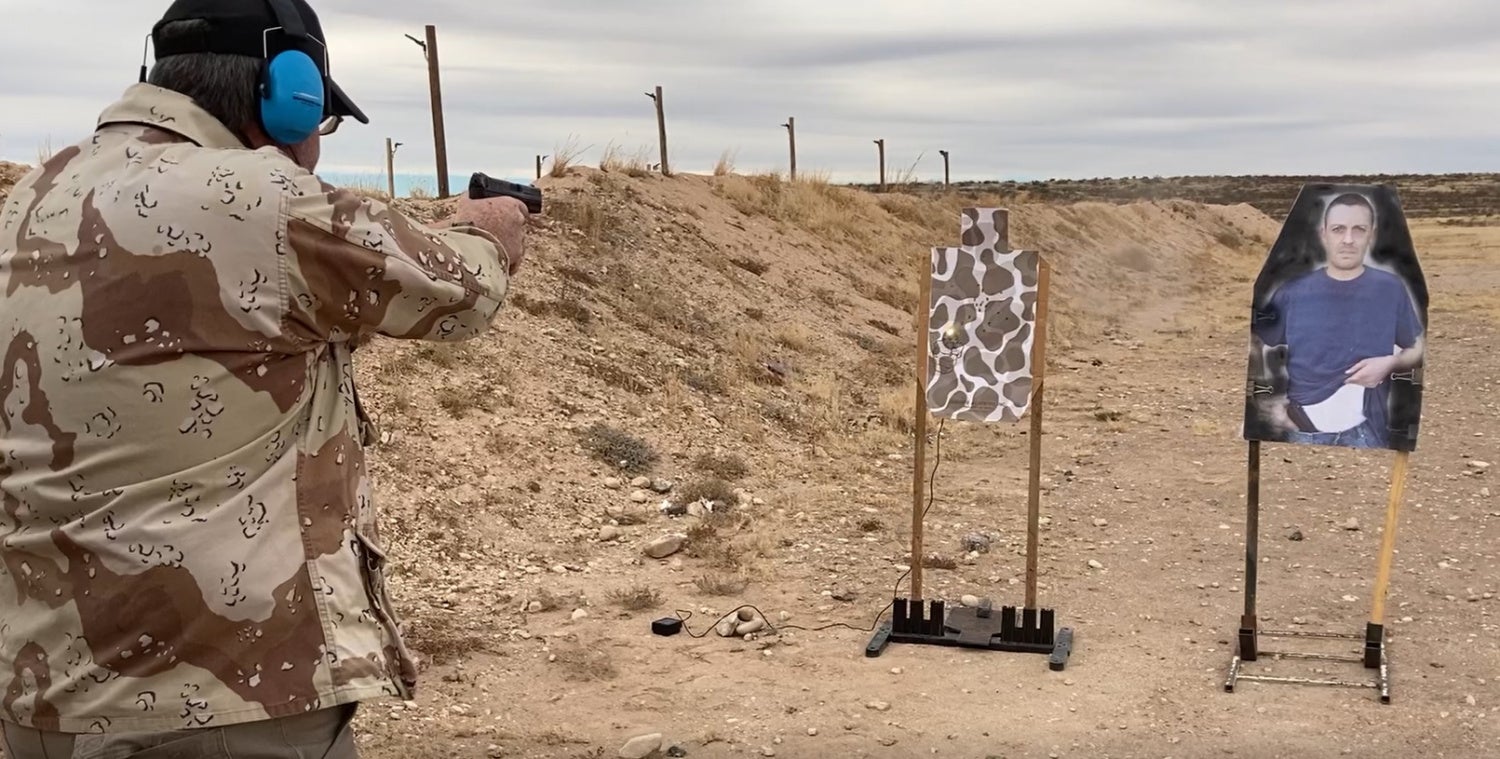
Flash appears in the left target…
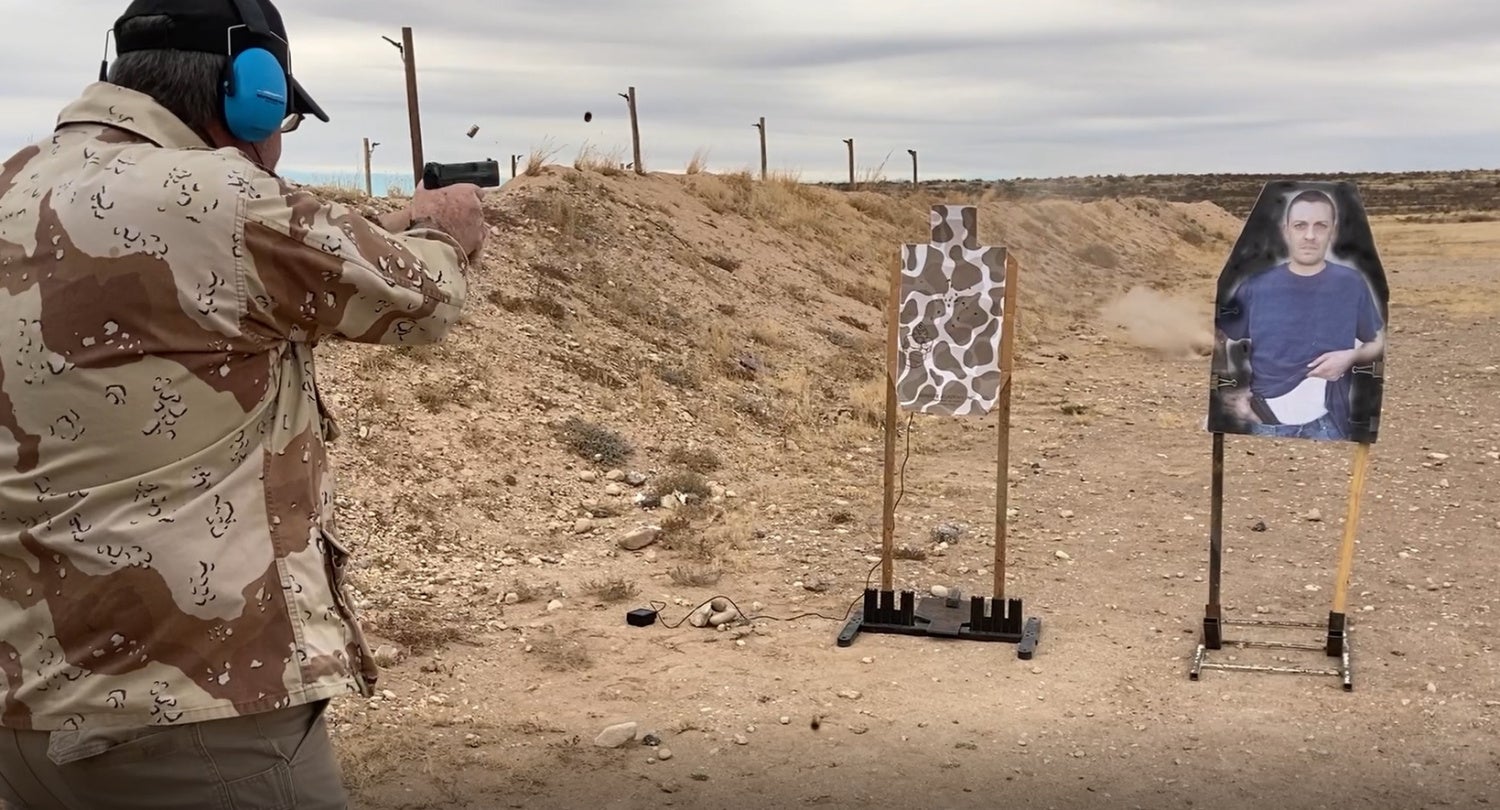
Those who are squeamish about sharing earbuds and earpro should keep antibacterial wipes handy. Trainers who want to run multiple students through the RG experience will want to plan on presenting it so as to not have excessive delays between rotations, and to preserve the element of surprise that it can effectively deliver, while never forgetting that action is faster than reaction, especially where being shot at is concerned.
While it may not be a one-stop panacea, the Reactionary Gap represents a valuable complement to reality-based training by virtue of multisensory stimulation. The system is good enough, and simple enough, to warrant scientific study with a control versus an RG-using group going through similar scenarios; measuring stimulus-response time before and after using the RG. Given the typically vast differences in the daily experiences and training backgrounds of concealed carrying civilians as compared to law enforcement, conclusions made with one group after such a study should not be assumed as applicable to the other.
The Reactionary Gap Training System is available for direct order at a base price of $599 during the current sale. Extra or replacement components and higher-capacity systems are also available.
 Your Privacy Choices
Your Privacy Choices
